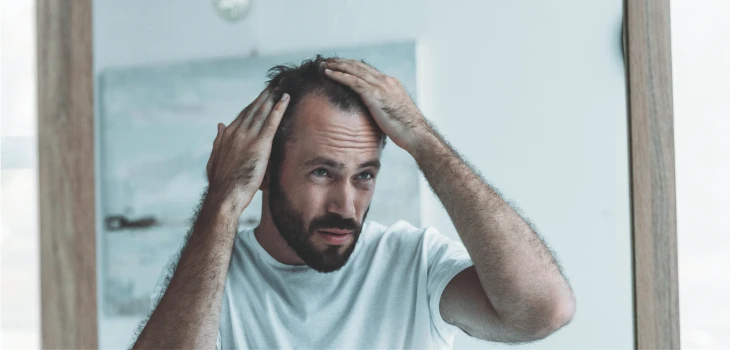Alopecia is not generally considered a disabling condition in medical terms. It is often believed that people who are suffering from alopecia are in good health. For sufferers of alopecia, it can be emotionally challenging to face the disorder.
The excessive hair loss commonly associated with alopecia can result in significant emotional distress. Some people cope with the emotional pain of alopecia with strong willpower, medical facts, and the support of their family members.
How does disability for hair loss begin?
Self esteem issues are common among alopecia patients. Professional counseling from a psychologist or psychiatrist that would help develop positivity and self-confidence in disabled people is recommended. Alopecia can be a lifelong condition or temporary depending upon the patient. At times alopecia requires medical treatment. The disability has no cure. Living with an Alopecia disability is not as easy as many people think.
Alopecia is most commonly diagnosed among people around 30 years of age according to the American Academy of Dermatology. However, this disease can affect anyone at any age. The condition is unpredictable and uncertain and can create havoc on intellectual health and well-being.
What Is Alopecia Areata?
Alopecia Areata refers to an autoimmune disorder that results in hair loss on the scalp and other parts of the body. The beginning indicators of this disorder are small round patches that are smooth on the skin.
The disorder sometimes begins in childhood, but can affect males and females of all ages. In the United States, the total number of people affected by the disease is over 6.8 million.
What causes Alopecia Areata?
The hair growth process is affected in Alopecia Areata. With the disorder hair follicles are attacked causing an adverse impact on the immune system of an individual’s body. At a later stage of the disorder, follicles become so small that hair production slows. As hair growth slows, eventually no visible hair remains on certain areas of the skin or even the entire body.
Mainly the scalp, beard, body, eyebrows, eyelashes, nose, ears, and other hair-bearing sites are most affected. Alopecia is an extremely rare genetic syndrome that can also cause seizures, delayed psychomotor development, hearing loss, and hypertonia along with hair loss. However, the symptoms may vary depending on the health of every individual.
People who suffer from autoimmune diseases such as rheumatoid arthritis and sclerosis, or otherwise have a deficiency of Vitamin D are at greater risk for Alopecia.
Types of Alopecia
There are different types of Alopecia including:
Alopecia Areata: Alopecia areata usually manifests in patchy areas of hair loss. The patchy baldness can begin appearing on any part of the body.
Alopecia Totalis: In this type of alopecia, an individual experiences complete baldness on the scalp.
Alopecia Universalis: This is a rare condition in which a person loses all hair over the entirety of the body.
Some other types of alopecia are alopecia barbae, scarring alopecia, diffuse alopecia areata, and alopecia ophiasis.
Who is susceptible to Alopecia Areata?
Anyone can suffer from Alopecia disability, yet some people are more likely than others depending on certain factors.
Alopecia has a genetic component. So if you have a close blood relative who suffers from Alopecia, you may be at greater risk. According to the American Academy of Dermatology Association, nearly 10 to 20% of people who suffer from this disability have a family member who also suffers from alopecia.
People who are already experiencing hay fever, asthma, atopic dermatitis, Down syndrome, or thyroid may suffer from Alopecia. Cancer patients who are being treated with a drug named nivolumab are at a greater statistical risk to develop Alopecia.
If a parent has alopecia, their child may also develop this disease. While the risk is greater there is never any certainty that a child will necessarily inherit the gene. Hereditary plays a key role in alopecia. It is considered a polygenic disease where multiple genes combine and contribute to this disability. Some children may experience alopecia while their parents have no signs of the disease.
Due to the considerable uncertainty still surrounding alopecia, it is sometimes called a complex disease. Researchers believe that environmental factors may play a role in the disorder.
People who experience severe alopecia areata are given various medical treatments. These include cortisone injections, minoxidil solutions, topical immunotherapy, Janus Kinase (JAK) inhibitors, and anthralin cream or other ointments.
If you are an Alopecia sufferer, you may be wondering about the benefits that are available with a disability for hair loss. A Social Security disability attorney can help you understand your rights and what steps you need to take to pursue them.
